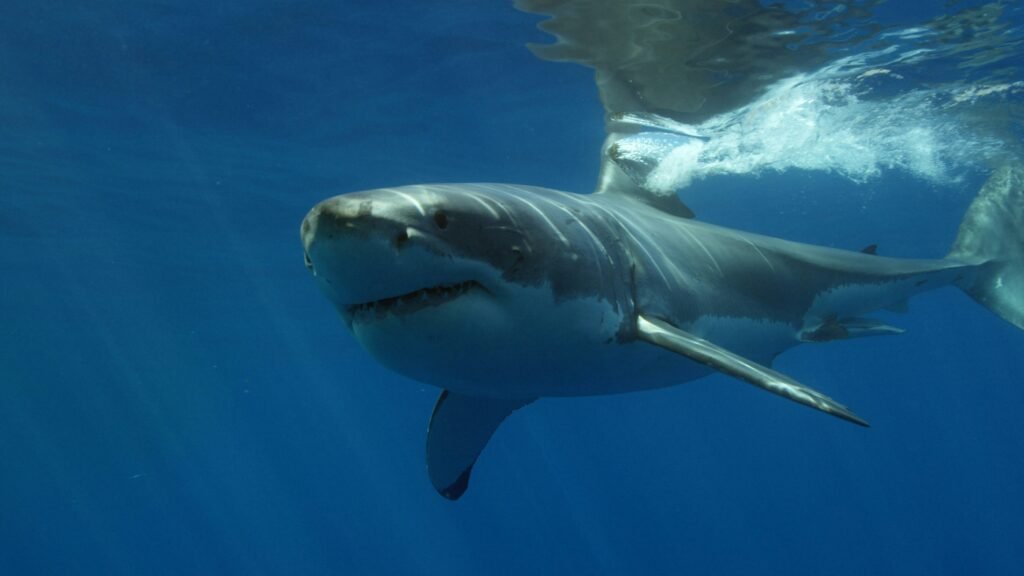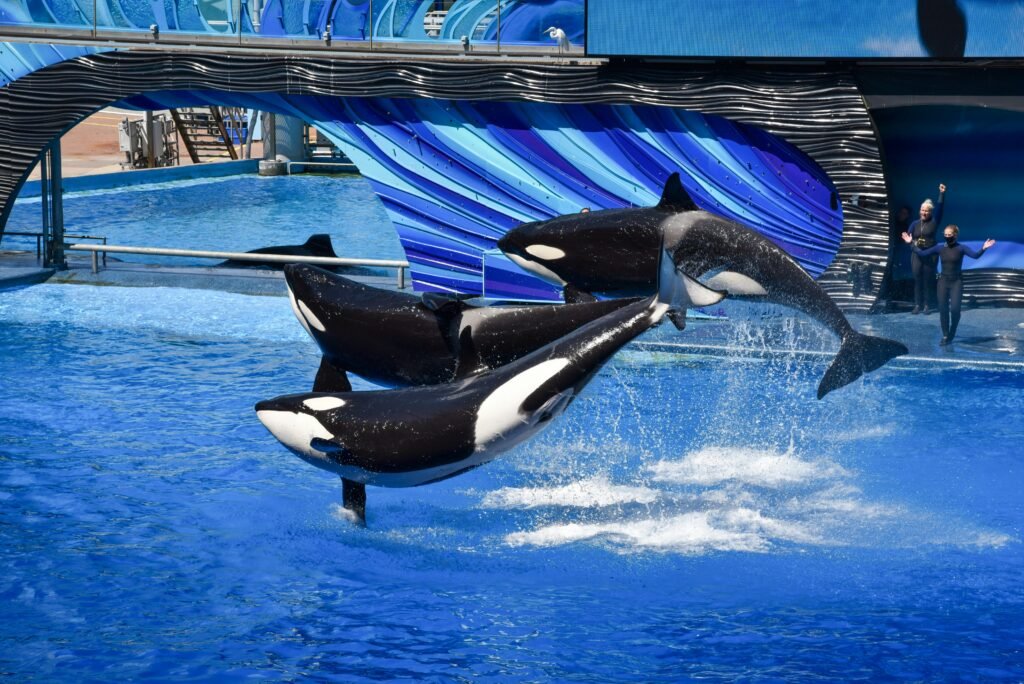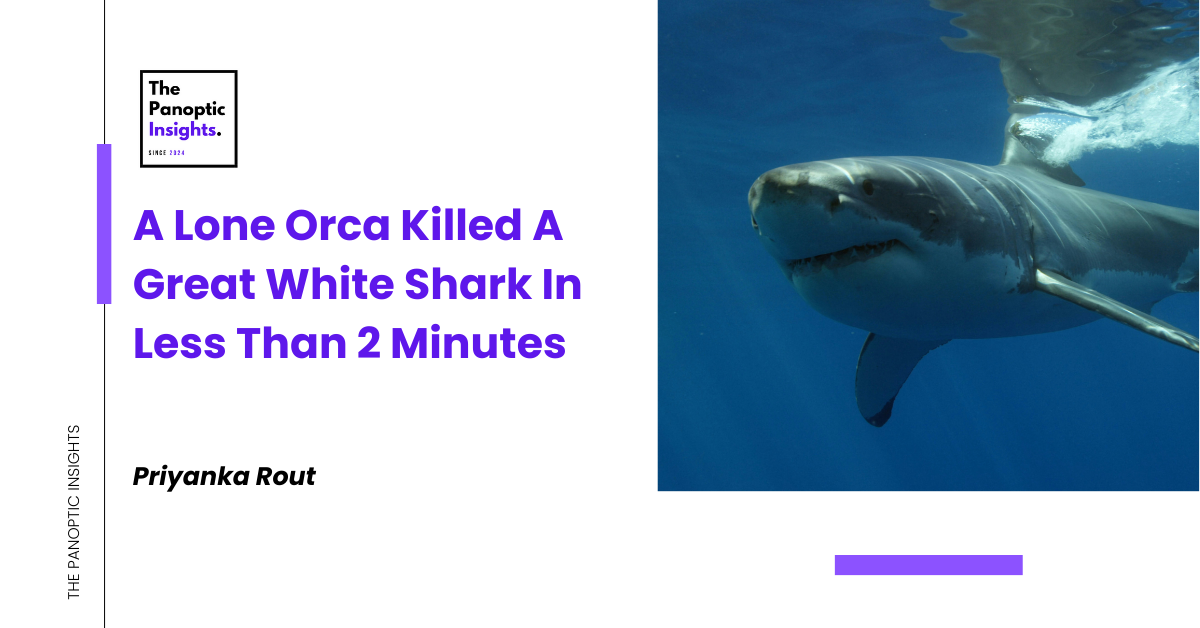Table of Contents
A Lone Orca Killed A Great White Shark: Let’s Get Started!
Beneath the vast expanse of the ocean lies a realm of mystery and survival. In a recent revelation that challenges our understanding of marine dynamics, new footage unveils a remarkable encounter: a solitary orca engaging in a swift and calculated takedown of a great white shark, shattering the notion that such feats require the coordination of a pack.
The gripping video captures the desperate struggle of the shark attempting to evade its relentless pursuer before succumbing to the orca’s prowess in a mere two minutes. As the orca swiftly claims its prize, carrying away the shark’s liver in its powerful jaws, it marks a groundbreaking moment in marine biology.
Published in the African Journal of Marine Science on March 1, this study cements the historic significance of the event, marking the first documented instance of a lone orca (Orcinus orca) successfully hunting and consuming a great white shark (Carcharodon carcharias), independent of its pod.
A Lone Orca Killed A Great White Shark: The Hunting Saga

A Lone Orca Killed A Great White Shark: In the warm waters off Seal Island, South Africa, a remarkable saga unfolded one fateful June day in 2023. It was a day like any other for the researchers aboard a tourist boat, scanning the horizon for signs of marine life. Little did they know, they were about to bear witness to a spectacle that would redefine their understanding of oceanic dynamics.
Among the waves danced two distinctive figures — orcas, affectionately known as Port and Starboard for the telltale collapse of their dorsal fins. These apex predators, already notorious for their audacious attacks on great white sharks, prowled the waters with a purpose that day, their reputation preceding them like a legend whispered among the waves.
The researchers’ eyes widened as they beheld a peculiar sight: an oily sheen slicking the water’s surface, punctuated by the frenzied dives of seabirds and a scent that hung heavy in the air — the unmistakable aroma of shark liver. It was a scent that seasoned marine biologist Alison Towner, lead author of the subsequent study, could identify with ease. “Once you’ve smelled it, you’d recognize it again,” she recounted later, attempting to articulate the indescribable richness of the odor.
As the boat bobbed gently on the waves, time seemed to stretch, pregnant with anticipation. And then, like a scene from a wildlife documentary, the tableau unfolded before their astonished eyes. A juvenile white shark, its sleek form slicing through the water, surfaced with Starboard in hot pursuit. The orca’s sleek black form cut through the waves with an effortless grace, propelling it towards its quarry with a determination that belied its playful moniker.
With a deft maneuver, Starboard closed the distance, guiding the hapless shark forward with a nudge of its pectoral fin. The water erupted in a frenzy as the shark thrashed and struggled against its fate. And then, in a moment of startling precision, Starboard seized its prey, gripping the shark’s pectoral fin in its powerful jaws. With a swift, practiced motion, it tore open the shark’s flesh, exposing the prized liver within.
In that instant, the researchers bore witness to a primal dance of predator and prey, a choreography as old as the ocean itself. It was a scene etched into their memories, a testament to the raw power and unfathomable complexity of life beneath the waves. And as they sailed away from Seal Island, the echoes of that encounter lingered, a reminder of the mysteries that still lurk beneath the surface of the sea.
A Lone Orca Killed A Great White Shark: Moments After The Hunting Saga

A Lone Orca Killed A Great White Shark: Moments later, a boat meant for shark cage diving, which happened to be nearby, caught sight of Starboard gliding past, clutching a piece of liver in its mouth, stained a peachy hue with blood, as shared in the study. Meanwhile, Port maintained a distance of about 330 feet (100 meters), observing the scene without direct involvement.
Esther Jacobs, the visionary behind the shark conservation initiative Keep Fin Alive, was among those who witnessed the spectacle. Reflecting on the event, she described it as a mix of devastation and awe, as Starboard swiftly targeted her favorite species of shark.
Although the onlookers missed the moment when Starboard extracted the liver underwater (A Lone Orca Killed A Great White Shark), marine biologist Alison Towner suggested that the shark likely met its end swiftly upon the orca’s attack.
The precise method by which orcas are able to tear open a shark remains a mystery, but further insights emerged the following day. Another great white shark, this one measuring 11.5 feet (3.5 meters), washed ashore nearby. Towner noted peculiar stretch marks along its flank, hinting at torsion induced by vigorous thrashing, providing valuable clues for researchers to unravel this enigmatic phenomenon.
Let’s Wrap Up!
A Lone Orca Killed A Great White Shark: The pursuit of shark livers by orcas isn’t merely a matter of preference but a strategic choice driven by the exceptional nutritional content they offer. According to Towner, these livers are a treasure trove of rich, oily lipids, constituting up to a third of some shark species’ body mass.
Often likened to the wolves of the ocean, orcas typically exhibit strong social bonds and prefer to hunt in coordinated groups. While they’ve demonstrated the ability to hunt solo on occasion, their predation of great whites has historically involved multiple individuals, ranging from two to six orcas in previous accounts.
This groundbreaking discovery carries significant implications for marine conservation efforts. Towner emphasizes that disrupting the delicate balance of top predators can set off a chain reaction with far-reaching consequences. With many shark species already grappling with the impacts of human activity, the addition of orca predation could tip the scales dangerously, exerting further pressure on already vulnerable populations and ecosystems.
FAQs
Do killer whales ever hunt great white sharks?
Orcas, also known as killer whales, are formidable creatures of the sea. With their immense size and remarkable intelligence, they are known to hunt various formidable oceanic dwellers, including the feared great white shark. (A Lone Orca Killed A Great White Shark)
In a battle between one killer whale and one great white shark, who would emerge victorious?
It’s a showdown of epic proportions: Willy versus Jaws, whale against shark (A Lone Orca Killed A Great White Shark). But when it comes down to a life-or-death struggle, the odds favor the killer whale. Despite the great white shark’s intimidating reputation, the sheer size and cunning intelligence of the orca give it the upper hand in a direct confrontation.
Are great white sharks intimidated by killer whales?
Researchers have observed that great white sharks, tagged for study, exhibit a tendency to vacate areas upon detecting the presence of killer whales. This suggests that the formidable reputation of the orca might indeed instill a sense of fear or avoidance in these apex predators of the ocean.
